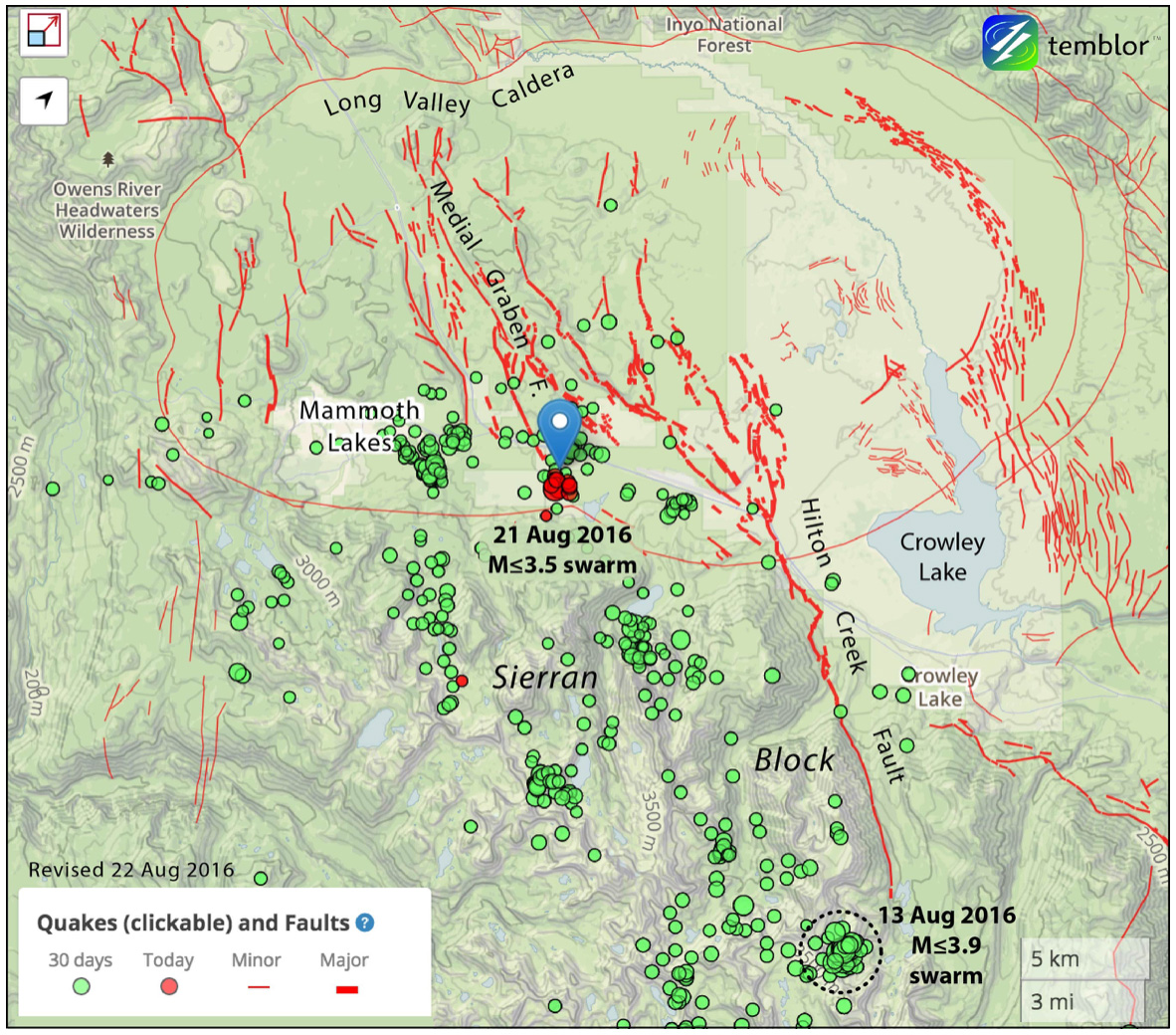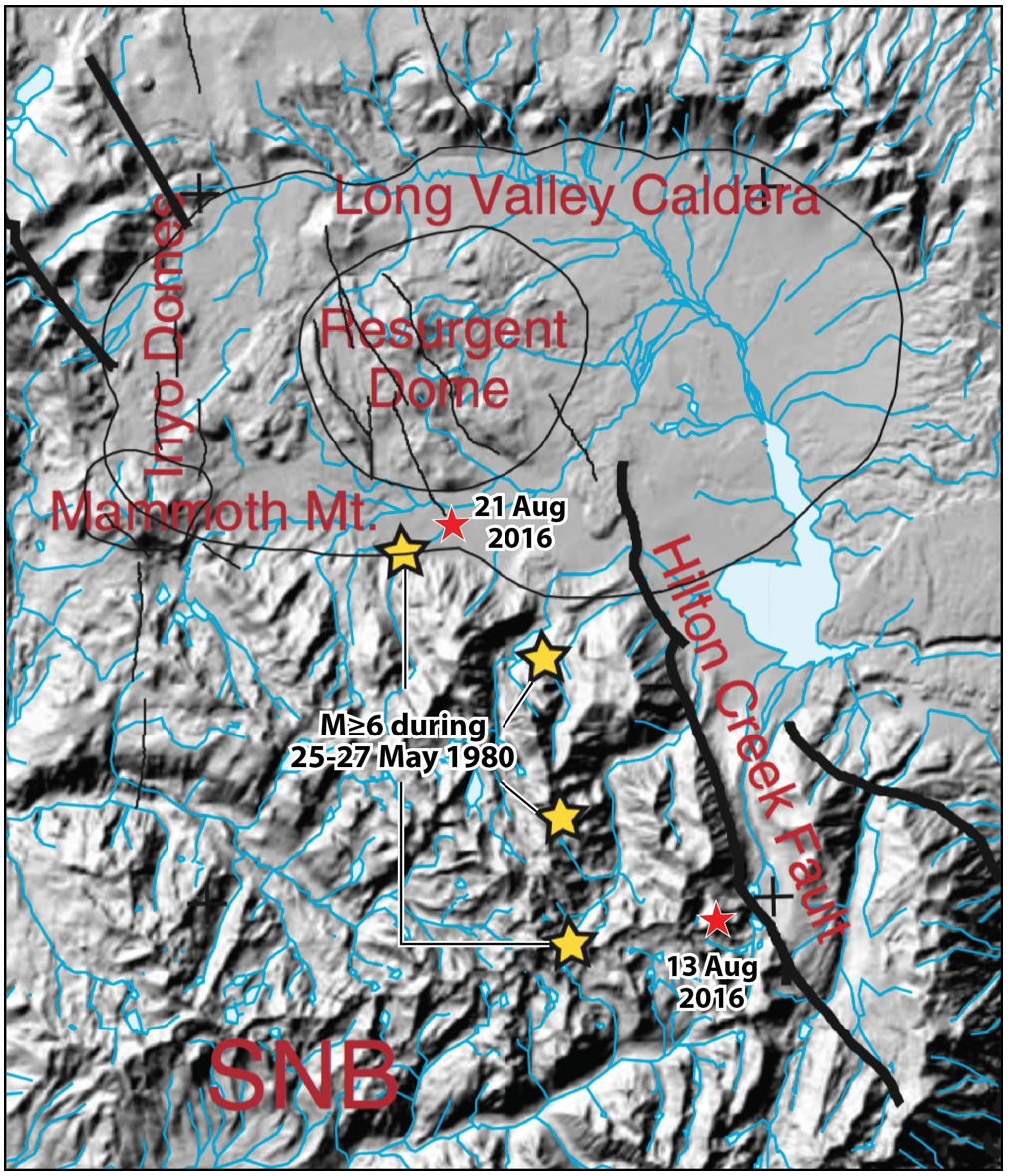By Ross Stein, Temblor

The two recent swarms are 20 km (12 mi) apart. The 13 August swarm lies on the west side of the Hilton Creek Fault, about 5 km off the southern end of the Fault in what is known as the “Sierran Block.” “Block” seems to me a misnomer: Far from being intact, the Block is riddled with small quakes which align along northwest-trending, east-dipping planes, and so must be traversed by active faults that either do not reach the Earth’s surface, or have not been discovered. In fact, the Sierran Block experienced four M≥6 shocks in three days in 1980.

The 21 August 2016 swarm is in the southern Long Valley caldera, within a few kilometers of the Medial Graben Fault, with a focal mechanism consistent with tension perpendicular to the Fault. The 21 August 2016 quake was felt in the skiing, fishing, and cycling resort community of Mammoth Lakes, California.
While the USGS fault database labels this strand as part of the Hilton Creek Fault Zone, and includes end-to-end rupture of this system in its earthquake forecast model for California (“UCERF3”), that view is disputed by USGS seismologists David Hill and Emily Montgomery-Brown. They argue that the Medial Graben Fault is the product of local stretching as the “resurgent dome” of the in Long Valley caldera expands due to underlying magma pressure. While this may be true, faults with different tectonic roles and origins sometimes rupture together, and so it is hard to exclude the possibility of a rupture linking the Hilton Creek and Medial Graben Faults.
On the basis of its length, the Hilton Creek Fault is capable of a M~6.5 earthquake. Based on the 1980 events, earthquakes of almost this magnitude might also be possible in the Sierran Block and in Long Valley Caldera.
Data from Northern California Seismic System: U.C. Berkeley, USGS Menlo Park, the Nevada Seismological Laboratory.
We are grateful for discussion with David Shelly, David Hill, and William Ellsworth (USGS)
Hill, David P., and Emily Montgomery-Brown (2015), Long Valley Caldera and the UCERF Depiction of Sierra Nevada Range-Front Faults, Bull. Seismol. Soc. Amer., doi:10.1785/0120150149,
Stephanie Prejean, William Ellsworth, Mark Zoback, and Felix Waldhauser (2002), Fault structure and kinematics of the Long Valley Caldera region, California, revealed by high-accuracy earthquake hypocenters and focal mechanism stress inversions, J. Geophys. Res, 107, 2355, doi:10.1029/2001JB001168, https://pangea.stanford.edu/departments/geophysics/dropbox/STRESS/publications/MDZ%20PDF’s/2003/Prejean%20et%20al.%202002%20JGR.pdf
Double-Difference Realtime Viewer of Felix Waldhauser, Lamonth Doherty Earth Observatory of Columbia University, http://ddrt.ldeo.columbia.edu/
- Upgrading Tsunami Warning Systems for Faster and More Accurate Alerts - September 26, 2025
- April 2025 magnitude 6.2 earthquake near Istanbul highlights strengths and weaknesses in seismic mitigation - September 14, 2025
- 2025 Kamchatka tsunami triggered rapid insurance payout in the South Pacific - September 12, 2025
